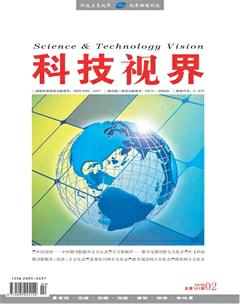The Activation and Application of Schema Theory in Pre—listening Activity
程晓燕 马媛
【Abstract】In this paper, the author will base on the important function of schema applied in teaching English listening, analyze the definition and classification of schema theory. Then, explain how important it is in pre-listening activities to activate students schema.
【Key words】Listening teaching; Schema theory; Activation and supplementation
1 The definition of Schema theory
In 1930s, the British famous psychologist F. Bartlett in his book Remembering first brought up the schema theory. Bartlett(1932) thought, schema is an active organization of past reaction or experience, and put forward that schema has been divided into two sections:schema of language and schema of content.
2 Application of schema theory into pre-listening activity
According to schema listening theory, background knowledge has plays a very important role in listening comprehension. The thesis will follow the formation of schema principles, and boldly put forward some tactics to activating schema in English pre-listening activities. There are eliciting background knowledge, teaching background knowledge, and making predictions.
2.1 Eliciting background knowledge
As mentioned before, listening to passages in the classroom can be more difficult than listening in real life due to lack of context. So the teacher can help provide the background information to activate your learners schema. In the first place, put forward questions and discussions related to the passage. As the second step, the teacher encourages discussion based on learners own experience with questions. As a result, they will be more ready in the following listening passages.
2.2 Teaching background knowledge
There are times when background knowledge is insufficient or not well organized so that listeners cannot make use of their background knowledge successfully. In such circumstances, the teacher has to provide background information to compensate learners lack of personal experiences or inadequate existing knowledge. In the following parts, two types of methods to teach background knowledge will be introduced.
2.2.1 Teaching related items
During listening process, the first obstacle is that there is usually a list of individual“new” words. Sometimes, teacher may go over the word list by giving definition either in English or Chinese, but only a few words have a single definition in the dictionary, and the meaning of a word depends a great deal on the context.
Lets look at an example: “Cathy visited Khan el Khaliti, a popular bazaar in Egypt.” If students do not know the word“bazaar”, there are not enough clues for them to guess the meaning.
2.2.2 Teaching exotic culture
In learning English for our Chinese students, the biggest difficulty of mastering English and conducting transitional communication is the culture shock. When people are talking about weather, health, age, salary, and peoples privacy, different culture may have different ways of expression. For example: When a Chinese student asked a foreigners comment after class, he said:“I am desirous of exploring your feelings on the lecture.” The foreigner felt very shock, and he answered: “Your English is too beautiful to be true.” In fact, the Chinese student has made a stylist mistake:“desirous of exploring your feeling” is not suitable in oral English. We must change the sentence into“Id like to hear your views on the lecture.” or “May I have your views on the lecture?” So if the teacher doesnt teach students to use proper expressions in right of different occasions and listeners, its easy for them to make mistakes.
2.3 Promoting predictions
Brown(1977) notes that native speakers do not totally depend on the sounds they receive instead make prediction actively. The automatic and constant predictions in different situations make the listening task for native speakers much easier. In this case, teacher can utilize such devices as the title of the passage, new vocabulary, guiding questions, and visual materials to help learners make appropriate predictions.
2.3.1 New vocabulary as hint
If there is already a word list in the students book, the teacher can still encourage learners to make guesses about the content, because the presumed new words usually provide much information about the content, and some vocabulary might even be the key words in the listening material.
2.3.2 Questions as guide
A widely used technique that promotes learners prediction is a set of guiding questions particularly designed for the passage. Such questions may concern with the main idea if the passage, or the major points requiring special attention. The advantage of setting probing questions based on the text is that the information gap makes the listening more purposeful.
3 Conclusion
On the whole, teacher utilizes such methods as eliciting background knowledge, teaching related items and culture, and making predictions which can offer more authentic learning environment during English listening process. It also facilitates activating students prior schema. with the development of science and techniques, teaching listening with schema theory will gradually take place of traditional ways in the future.
【References】
[1]崔丽霞,刘文菊,李志远.英语听力教学中图式的有效激活与补充[J].山东外语教学,2007,3,59-72.
[2]胡庚申,曹莉.中国语境下的高校英语教学[M].北京:清华大学出版社,2000.
[3]王蔷.英语教学法教程(第二版)[M].北京:高等教育出版社,2000.
[4]张爱荣.图式理论与听力教学[J].中美英语教学,2005,2,106-119.
[责任编辑:王楠]

